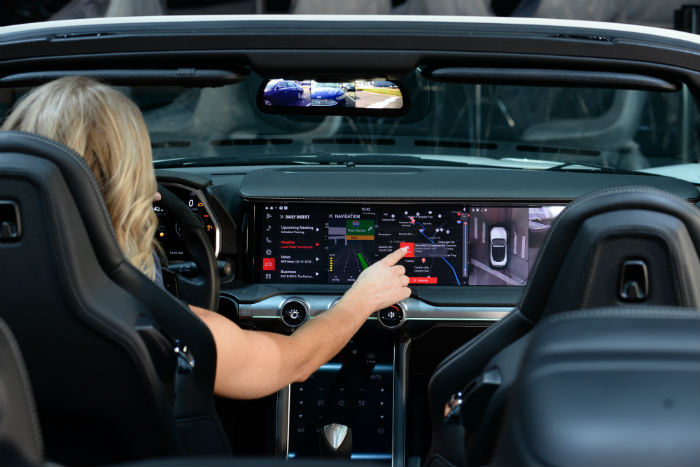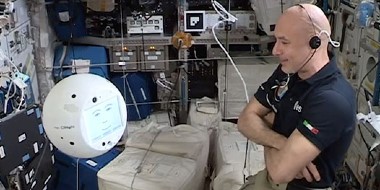Auto Industry
Some Assembly Required: What’s Ahead in Automotive Design
October 20, 2019 | Written by: George Ayres
Categorized: AI | Auto Industry
Share this post:
 Industry 4.0 has arrived in the automotive industry, bringing substantial shifts in worker skill sets, line machinery maintenance and production quality control. According to the Association for Talent Development, knowledge workers are now in demand on factory floors, and CIO notes that proactive maintenance could help organizations cut the $50 billion they spend each year on downtime.
Industry 4.0 has arrived in the automotive industry, bringing substantial shifts in worker skill sets, line machinery maintenance and production quality control. According to the Association for Talent Development, knowledge workers are now in demand on factory floors, and CIO notes that proactive maintenance could help organizations cut the $50 billion they spend each year on downtime.
As the industry itself undergoes substantive change, so do its component parts. The result? Assembly lines, automotive design and production processes must evolve to meet emerging consumer demands. Three key concepts underpin this critical shift: The four-force model, the feature-first factor and the experience-expenditure equation. Here’s what it means for auto manufacturers.
The Four-Force Model
Four key forces are driving the Industry 4.0 shift in automotive design processes.
- Software Development. With critical vehicle features increasingly controlled by onboard software, automakers need customer-focused human-machine interfaces to deliver on expectations. Manufacturers might need to partner with industry innovators to refine their approach to software.
- Personalization. Privacy and security concerns are growing, but consumers are still demanding vehicle personalization. Customers increasingly expect this level of recognition and personalization from the brands they choose, according to Gartner.
- Multimodal Integration. In the multimodal ecosystem, various modes of transportation communicate with each other — for example, automobiles talk to parking facilities, roadway AI tools and trains to estimate time of arrival and facilitate mobility. As noted by the U.S. Department of Transportation, connected vehicles are safe and environmentally friendly, and they enable smart driving choices. But designing and producing these vehicles requires substantive third-party involvement.
- New Consumer Segments. Vehicle fleets, for example, are stocking more hybrid and electronic vehicles. To ensure continued operation, fleet buyers and renters will demand end-to-end service and support.
The Feature-First Factor
Under the Industry 4.0 model, automakers will still leverage production lines, but the number of parts per vehicle will decrease — from 8,000-plus parts to about 1,000, many of which will be installed after vehicles leave the manufacturing floor. Such a shift is predicated on a long-tail, IT-driven production line powered by digital twin technology that informs production and tracks lifetime modifications.
Features, as a result, have become paramount. Physical appearance and engine size take a back seat to value-added autonomous vehicle features, such as predictive maintenance. Large trucking companies are already leveraging a feature-first framework.
In this scenario, feature-first companies define the market, and everyone else is left to follow. Manufacturers are in an unenviable position: Retail customers currently make up a large proportion of electric vehicle sales, but those vehicles aren’t in constant use — they’re parked a majority of the time and in motion the rest. The fleet model flips the equation, keeping most units in operation most of the time.
Automakers may find themselves beyond their depth as they attempt to innovate like startups but lack the collaborative tech community necessary to design and deploy new ideas at speed. IBM’s Garage methodology offers one way to encourage innovation by combining speed and scale to facilitate new ideas — without giving up ownership or control.
The Experience-Expenditure Equation
New design processes also prioritize a streamlined ownership experience over the physical process of driving a car. How a vehicle integrates with an owner’s life is now more important than how fast a car goes or how fun it is to drive, and better experiences drive increased expenditure from consumers.
This is due at least in part to the rise of electric vehicles. The number of electric cars worldwide swelled to more than 5 million in 2018, the International Energy Agency notes. New electric car sales doubled that year, and they’re projected to reach 23 million by 2030 as battery technology, creature comforts and performance improve. The next wave of electric vehicle sales will be driven by single-car users who buy an electric vehicle as an everyday conveyance, not a secondary luxury vehicle.
To meet that demand, distribution production lines must be capable of creating “skateboard” platforms — a simple, one-piece chassis that myriad body styles can be designed to fit on. Skateboard platforms improve manufacturing efficiency, CNet says, by reducing assembly line complexity and allowing for capricious changes in the tastes of the buying public.
___________________________________________
Learn how Volkswagen achieved rapid innovation in an IBM Garage. Also, read more about digitization in the auto industry in the IBM Institute for Business Value report “Opening the garage door.”

Client Partner, Automotive Industry, IBM Global Business Services
A New Wave: Transforming Our Understanding of Ocean Health
Humans have been plying the seas throughout history. But it wasn’t until the late 19th century that we began to truly study the ocean itself. An expedition in 1872 to 1876, by the Challenger, a converted Royal Navy gunship, traveled nearly 70,000 nautical miles and catalogued over 4,000 previously unknown species, building the foundations for modern […]
Igniting the Dynamic Workforce in Your Company
In the rapid push to moving to remote work, we’ve seen digital strategies accelerate by years – transforming their workplaces, workstyles, and business processes forever. Overnight, remote workforces put advanced environments of multi-device mobility, dynamic connection points and robust cloud-based apps that ease communication and collaboration. A new normal is emerging, led by the companies aggressively adopting cloud […]
Lessons from Space May Help Care for Those Living Through Social Isolation on Earth
Since the Crew Dragon spacecraft arrived at the International Space Station (ISS) on May 31, NASA astronauts Bob Behnken and Doug Hurley have been busy—according to their Twitter posts, even working over the weekend to repair the ISS treadmill. They likely don’t have much time to think about being lonely and cut off from life […]


